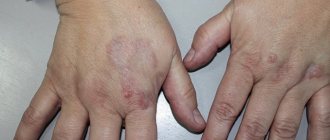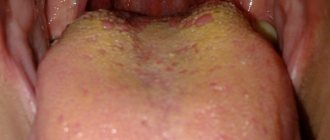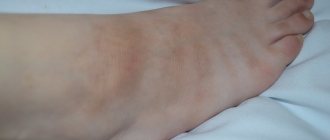Hepatosplenomegaly is a simultaneous enlargement of the liver and spleen. This problem manifests itself in adults and children with bloating, pain in the side on the right and left, and indigestion. After detecting suspicious signs, you should seek medical help. Your physician or hepatologist will explain what hepatosplenomegaly is and how to treat the condition. To do this, the doctor prescribes a diagnosis and determines the root cause. After this, complex conservative treatment is prescribed. Additionally, you must adhere to a healthy lifestyle. In severe cases, surgery is performed.
What is hepatosplenomegaly
Hepatosplenomegaly is an increase in the size of the liver and spleen. Characterized by abdominal bloating and unpleasant symptoms. Associated with impaired outflow of venous blood and lymphatic fluid from these organs. The liver is closely connected with the spleen not only by location, but also by lymphatic vessels, the portal vein system, and general innervation.
The problem is usually discovered incidentally during examination for other diseases. Enlargement of organs is secondary, that is, a consequence of some pathology. Hepatosplenomegaly is more common in children from birth to 3 years of age than in adults, especially with concomitant cancer.
Causes
The causes of hepatosplenomegaly vary. This deviation occurs in the following pathologies:
- Liver lesions. They provoke deviations in the blood flow of the portal vein. Such ailments include cirrhosis, hepatitis, damage to the hepatic vessels;
- Helminthic infestations and infections. These include malaria and brucellosis. The cause of liver enlargement can be leishmaniasis, mononucleosis and many other pathologies;
- Damage to the heart and blood vessels. Often the provoking factor for problems is heart defects, arterial hypertension, ischemia;
- Systemic blood pathologies. These include lymphogranulomatosis. Anemia or leukemia can also cause problems;
- Metabolism problems. This category includes such abnormalities as amyloidosis and hemochromatosis.
Causes of hepatosplenomegaly in adults and children
When hepatosplenomegaly is detected in a child or adult, the provoking factors are usually diseases of the internal organs, infections, parasites, cancer and disorders of the cardiovascular system, and systemic skin diseases. The appearance of this syndrome in children is often associated with cancer, congenital tuberculosis or syphilis, and sometimes with poor diet (fatty, fried, junk food). Rarely occurs due to intrauterine developmental disorders.
Liver damage
Diffuse liver diseases (tissue changes) lead to disruption of blood flow through the portal vein. The condition is associated with:
- cirrhosis;
- non-inflammatory diseases;
- hepatitis.
Tissue changes occur due to fibrosis, intrahepatic and extrahepatic cholestasis. During diagnosis, cysts or tumor-like formations are also detected.
Tissue damage occurs in chronic or acute form. This causes the appearance of regenerative nodes (disturbance of the lobular structure of the liver).
Infectious and parasitic diseases
Moderate hepatosplenomegaly is often caused by diseases of an infectious nature. For example, such manifestations are caused by malaria, rubella, cytomegalovirus and mononucleosis. Sometimes hepatosplenomegaly occurs due to parasitic infestations. The cause is worms - echinococci, opisthorchis, alveococci.
Oncology and blood diseases
Hepatosplenomegaly in children occurs due to problems with blood plasma. Diseases of the hematopoietic system are divided into several categories. These are mainly severe conditions:
- lymphogranulomatosis;
- leukemia;
- pernicious anemia or anemia.
Oncological preconditions arise in the liver in the form of benign formations. A tumor or polyp can develop into a malignant growth, which causes the liver to increase in volume.
Heart diseases
Hepatosplenomegaly syndrome with liver enlargement occurs due to chronic diseases. Violation of the flow and flow of blood in the portal vein occurs due to damage to the heart. This is affected by cardiovascular diseases such as hypertension, defects or insufficiency. Enlargement of the spleen and often the liver is associated with post-infarction cardiosclerosis or fibrosis of the heart.
Other states
Sometimes an increase in hematopoietic organs and impaired blood flow occur due to pathological changes in the body as a whole, metabolic disorders and due to autoimmune reactions:
- systemic lupus erythematosus;
- acromegaly;
- amyloidosis;
- sarcoidosis and others.
The liver is directly affected by the condition of other internal organs. Therefore, its increase is associated with problems of the digestive tract.
Prognosis and prevention
Hepatosplenomegaly is a terrible syndrome that requires mandatory seeking highly qualified medical care. The prognosis depends on the underlying disease against which hepatolienal syndrome developed. Predicting the further development of hepatosplenomegaly is almost impossible due to the multifactorial nature of the formation of this condition. Prevention consists of preventing the development of diseases that can lead to enlargement of the liver and spleen.
When pain in one of the internal organs begins to bother you, it is not very pleasant, and it also happens that several organs suffer at once. These diseases include hepatosplenomegaly. What kind of disease is this in adults?
Hepatosplenomegaly is not a separate disease, but a syndrome that manifests itself as a simultaneous increase in the size of the liver and spleen. These organs are connected to each other by the portal vein and have the same innervation routes, and they have common lymphatic passages for removing fluid. This syndrome indicates the presence of a disease of one of the internal organs. It may manifest itself as symptoms such as abdominal pain when pressing with fingers, tingling in the ribs and epigastrium, accompanied by a feeling of heaviness. The manifestation of symptoms of hepatosplenomegaly syndrome will directly depend on the disease of the internal organ that is the source of the disease.
It is possible to detect that the liver and spleen have increased in size with an ultrasound examination or computed tomography, as well as with the help of palpation and percussion.
Unfortunately, this hepatosplenomegaly syndrome can occur in both adults and children. This syndrome is often observed in newborn infants and children under three years of age. Hepatosplenomegaly begins to manifest itself in the baby while still in utero; the cause may be the presence of infection or oncopathology, as well as diseases of the internal organs. Older children may experience this syndrome due to poor nutrition, if they eat a lot of fatty foods. And also during the period of active growth of the child, when internal organs grow and form.
It is very important to find the underlying disease that caused complications in the liver and spleen and cure it. In this case, these organs themselves will be able to return to normal size and the child will no longer be in any danger in his further development.
Additional symptoms
Signs of liver enlargement with hepatosplenomegaly cause discomfort. A person feels unpleasant sensations - heaviness in the abdomen, a feeling of fullness, pain in the epigastric region and in the right hypochondrium.
It is worth paying close attention to the following clinical manifestations of hepatosplenomegaly:
- ascites (swelling) of the abdomen;
- signs of jaundice: yellowing of the skin, eyes, tongue, darkening of urine and lightening of stool;
- feeling of heaviness in the abdominal area.
With hepatosplenomegaly, the size of the abdomen increases as a result of the accumulation of fluid in the abdominal cavity. Because of this, the patient feels heaviness and bloating. On the abdomen in the navel area, veins under the skin become visible (a sign called “Medusa’s head”). Sometimes you can notice a tumor in the right hypochondrium, which moves during breathing. This is a clear sign of an enlarged liver, which should normally be hidden by the lower right rib. If a round formation is detected on the left, an enlarged spleen is palpable. The syndrome is accompanied by nagging pain.
Hepatosplenomegaly is often combined with signs of jaundice, when the skin of the body and the mucous membrane of the eyes and mouth change color to pale yellow. Gastrointestinal and nosebleeds are possible, bruises appear on the body and limbs.
Symptoms of manifestation
The initial symptoms that may occur with hepatosplenomegaly syndrome should not be ignored. Especially if they cause some discomfort and appear for a long time. When the disease is identified, it will help to avoid complex and lengthy treatment. Symptoms that may appear:
- a feeling of heaviness and expansion that appears from the left and right hypochondrium,
- swelling (ascites) of the abdomen and its increase in size due to the accumulation of fluid in it,
- pain at the location of the liver,
- jaundice. The skin and mucous membranes of the eyes may become yellow,
- tumor formation under the right hypochondrium, which can move when breathing, may be accompanied by pain
Hepatosplenomegaly syndrome can occur for several reasons, the main ones being:
- Acute or chronic liver diseases in which blood circulation is impaired. Such liver diseases include: diffuse liver inflammation, cirrhosis, fibrosis, cholestasis, liver cyst, hepatitis.
- Chronic diseases of the cardiovascular system (heart failure, constrictive pericarditis, heart disease, hypertension, heart disease),
- Infectious diseases, invasions (mononucleosis, malaria, typhoid fever),
- Severe blood diseases (severe anemia, leukemia)
- Heredity.
In a healthy person, the liver has a smooth, even edge, and if there are disorders associated with the disease, then upon palpation the organ may feel hardened, rounded, lumpy or loose. The liver and spleen increase in size at the same time, or they can increase in size one by one, depending on which organ has “failure” in its work and which is subject to greater load.
During an ultrasound examination, they can write a conclusion - diffuse changes in the liver and pancreas. What does this mean? The pancreas is very tightly connected to the liver and gallbladder, so any abnormalities will be reflected in the adjacent organ. Therefore, any discomfort or pain can mislead the patient about the source of the diseased organ. Diffuse changes in the liver are changes in the structure of the liver itself. Signs of the presence of diffuse changes in the liver are minor or complex pathological changes in the structure of the organ. In this case, there is a discrepancy in the size of the lobes of the liver parenchyma, an external change in its edges, and the space between the veins and arteries and bile ducts is visible. This may be a signal of liver disease. With hepatosplenomegaly, diffuse changes in the liver are characterized by an increase in size.
The liver is a “filter” of our body; it cleanses it of toxins, saturates the blood with the necessary enzymes and performs other functions. If the liver is affected by a large number of irritants, toxins or other harmful substances, then it begins to actively remove them, this can provoke hepatosplenomegaly, that is, an increase in its size and disruption of its functioning.
Treatment of diffuse liver changes usually gives positive results if the source of the disease is identified in time. If the source of liver poisoning is a viral infection, then antiviral and antibacterial drugs are prescribed.
The blood also needs to be cleansed of toxins. And in combination with general treatment, the doctor prescribes vitamins to quickly restore the body.
Liver diseases
More complex liver diseases include:
- Hepatitis A, B, C
- Cirrhosis is a disorder of the liver, in which the entire epithelium of the organ is destroyed and cannot be restored,
- Hepatosis,
- Liver failure - in this condition, the liver does not fully perform its functions,
- liver cyst,
- Benign and malignant tumors on the liver, cancer
- Fibrosis is when healthy liver cells are gradually replaced by connective tissue.
Symptoms that can appear in the early stages of liver disease are almost the same in men and women and appear as follows:
- Emotional stress - with the manifestation of anger, irritation, fatigue,
- Constantly recurring colds,
- Hypertension,
- Excess weight,
- Pain in the right side, often aching or intensified,
- Jaundice, when the mucous membranes of the eyes and skin color have a yellowish tint,
- Skin changes (red feet and palms, spider veins)
- Nausea, sometimes with vomiting,
- Bitterness in the mouth
- Dark urine and liquid stool
- Flatulence
- Menstrual irregularities in women, and impotence in men.
Treatment is prescribed individually to each patient by his attending physician, based on the results of the examination and tests. Unfortunately, most liver diseases are very difficult to treat. Many of them are not amenable to drug treatment, since it is not possible to completely restore the liver. But you can still support. Treatment with medications and the course are prescribed strictly by the doctor.
Following a diet will be a good help for successful treatment.
The doctors you should contact if you notice a suspicion of hepatosplenomegaly are your primary care physician, and he may give you a referral to visit other specialists, such as a gastroenterologist, hematologist, or infectious disease specialist.
How to treat hepatosplenomegaly
The doctor prescribes treatment individually for each patient. As a rule, the following types of therapy are most often used:
- Drug therapy,
- Detoxification,
- Basal therapy,
- Hormone therapy.
During drug therapy, cholespasmodic drugs are prescribed (papaverine, nosh-pa, dibazol), as well as choleretic drugs (holosas, sorbitol, magnesium solution).
Diagnostic methods
Enlarged organs can be felt by palpation, and in some cases they can even be determined visually. It is necessary to take tests:
- clinical blood test (will show the presence of inflammation and problems of the hematopoietic system);
- biochemical blood test (will confirm that the problem is with the liver);
- general analysis of urine and feces.
Ultrasound examination is considered an informative instrumental diagnostic method. Ultrasound allows you to assess the degree of tissue changes, the presence of neoplasms, and problems with other internal organs. Computed tomography provides similar, but clearer data.
It is worth noting that the list of symptoms for this syndrome is determined by the course of the disease that caused hepatosplenomegaly. In other words, whatever symptoms are characteristic of a particular disease, such symptoms will appear in a patient with hepatosplenomegaly syndrome.
Additionally, angiography is performed as a method of visualizing the size of the liver and the nearby spleen. To perform angiography, a radiopaque substance is used, which helps to convey a clear image of the vessels of the liver and spleen and determine exactly where problems with blood supply have arisen. When diagnosing, the doctor observes the following echo signs:
- anechoic nodules – a sign of a cyst;
- rough echostructure is a sign of fibrosis;
- an enlarged liver with uniformity indicates fatty degeneration.
Instrumental examination also includes taking biopsy samples from the liver and spleen, puncture from lymph nodes and bone marrow. This is necessary if other methods have not given an accurate result. A biopsy (tissue sampling with a thin needle through the skin) is performed under local anesthesia.
If hepatosplenomegaly is caused by problems of the heart and blood vessels, electrocardiography and ultrasound of the heart are necessary.
What are the sizes of the liver and spleen in moderate hepatosplenomegaly?
To define moderate hepatosplenomegaly, comparison with normal organ sizes is used. To determine the boundaries of the liver and spleen, the most informative are ultrasound or CT. Although physical examinations (percussion, palpation) are still used today.
This is interesting: Diet for liver enlargement: what can and cannot be eaten?
To record “splenomegaly”, it is necessary to confirm the increase in the size of the spleen in length to 13-20 cm (the norm is up to 12 cm) and to palpate its contours (2-4 cm below the edge of the costal arch on the left).
Normally, the upper border of the liver during percussion is determined at the level of the lower edge of the right lung. Its lower border extends to the level of the costal arch on the right. In diameter it measures up to 12 cm, narrowing to 6 cm along the left edge. Moderate enlargement of the liver is said to occur if its size exceeds 13 cm along the right midclavicular line, which is 1-2 cm more than normal parameters.
Treatment of hepatosplenomegaly
A patient with hepatosplenomegaly needs to know that it is not the enlargement of organs itself that is being treated, but the disease that caused it. Medicines against the underlying disease and dietary nutrition are prescribed. In severe cases, surgery is performed.
Drug therapy
Treatment with drugs for hepatosplenomegaly of the liver is carried out using the following groups of drugs:
- removing toxins;
- glucocorticosteroids;
- symptomatic remedies.
To remove toxins that have accumulated due to impaired liver function, a solution of Reopoliglucin up to 400 ml or Hemodez up to 300 ml per day is prescribed. Additionally, basal therapy medications are prescribed:
- Interferon (for viral diseases);
- Imuran (if the increase is caused by autoimmune processes);
- No-shpa, Drotaverine (to relieve spasms in the biliary tract);
- Gepabene, Heptral, Karsil (hepatoprotectors that help the liver recover);
- Holosas (to enhance the excretion of bile, in the absence of stones in the bile ducts and bladder).
- vitamin complexes to strengthen the immune system (Liver active Nutrilite, Hepatrin);
- hormonal medications to quickly relieve inflammation (Prednisolone);
- Lacidofil, Linex and other probiotics.
Diet and lifestyle
The diet for hepatosplenomegaly is based on table No. 5 according to Pevzner. Prohibited:
- fried food;
- fatty foods;
- pickles;
- spicy seasonings;
- smoked products;
- alcohol;
- cakes.
It is allowed to include dietary meat and fish in the diet. It is recommended to cook dishes boiled or steamed. Porridge is useful for hepatosplenomegaly. The doctor will recommend consuming cottage cheese and other low-fat fermented milk products (but not low-fat).
Dietary food for liver hepatomegaly contains all available and inexpensive products, and from the list of allowed ones you can choose what suits your money or what you want. The estimated cost of a weekly diet varies between 1400-1500 rubles.
During this period, it is necessary to replenish the body’s water balance and drink purified water in a volume of 1.5-2 liters per day. From drinks it is allowed to prepare compotes and jelly from fruits and berries. Strong coffee or black tea are prohibited - it is better to replace them with chicory and green/red tea.
In case of acute inflammation of the liver, complete rest and bed rest are recommended. In other cases, moderate physical activity is only beneficial.
Surgery
Surgery for hepatosplenomegaly is performed if the patient is admitted in serious condition or has a malignant tumor. For ascites, pumping out the accumulated fluid is prescribed. For cancer, chemotherapy is given after surgery.
If hematopoietic disorders are detected, a bone marrow transplant is performed.
Authorized Products
Diet for liver hepatomegaly includes:
- Dried/day-old white bread or white crackers.
- Vegetarian or soups made from weak meat and fish broths with the addition of well-cooked cereals and vegetables. When preparing broths, the first broth is drained, and then the meat/fish is cooked in a new portion of water.
- Dietary varieties of red meat (beef, veal) and rabbit, chicken, turkey. Occasionally - lean pork. Boiled meat can be baked.
- Low-fat varieties of fish (pollock, hake pike perch, perch, bream, cod) boiled/baked, chopped or in pieces.
- Various types of porridge prepared with milk or water, vermicelli/small pasta.
- Vegetables (potatoes, white cabbage/cauliflower, carrots, beets, cucumbers, pumpkin, zucchini, zucchini), both in the form of salads and boiled/baked as side dishes with vegetable oil. You can add some fresh/dried garden herbs to your dishes.
- Fermented milk products and non-acidic low-fat cottage cheese, homemade cheeses.
- Sweet berries/fruits: baked and fresh apples, overripe bananas, apricots, peaches, pears, persimmons, cherries, kiwi, quince, currants, plums, strawberries, figs, dates, prunes, dried apricots, pomegranates, watermelons, raisins, melons, grapes (if tolerated), blueberries, as well as their freshly prepared juices, diluted with water, jellies, jellies and compotes.
- Refined/unrefined vegetable oils (sunflower corn, olive) for cooking and dressings. Butter no more than 40 g per day for seasoning ready-made dishes.
- As a dessert - a little honey, caramel, marmalade, marshmallows, marshmallows, preserves, jam in moderate quantities.
- Free liquid - up to 2 liters in the form of freshly prepared juices diluted with water, herbal teas, fruit/berry teas, rosehip infusion, mineral water. The liquid should be at room temperature; you should not drink chilled drinks.
Hepatosplenomegaly is a simultaneous enlargement of the liver and spleen. This problem manifests itself in adults and children with bloating, pain in the side on the right and left, and indigestion. After detecting suspicious signs, you should seek medical help. Your physician or hepatologist will explain what hepatosplenomegaly is and how to treat the condition. To do this, the doctor prescribes a diagnosis and determines the root cause. After this, complex conservative treatment is prescribed. Additionally, you must adhere to a healthy lifestyle. In severe cases, surgery is performed.
How to treat this syndrome at home?
The patient's management tactics depend on the diseases that cause hepatosplenomegaly. That is, in each case of the disease etiotropic therapy should be carried out:
- viral infections – antiviral therapy;
- parasitic – antiparasitic drugs;
- cardiovascular diseases - treatment with diuretics, beta blockers, sartans, etc.;
- autoimmune lesions - the use of corticosteroid and immunomodulatory therapy;
- Oncological diseases of the blood - radiation therapy, chemotherapy.
In addition, specialists, if necessary, prescribe symptomatic treatment:
- for spastic abdominal pain, antispasmodics are recommended: drotaverine, papaverine, platyphylline;
- to maintain liver function, hepatoprotectors are prescribed: Essentiale, Heptral, Karsil, Riboxin, etc.;
- pre- and probiotics: Hilak-forte, Bifiform, Bifidumbacterin, etc.
If an adult patient asks what hepatosplenomegaly is and how to treat it at home, then there is only one answer to this question: follow all the doctor’s recommendations!











